A saying attributed to the ever-chipper Joseph Stalin goes: “A single death is a tragedy; a million deaths is a statistic.” Seeing death and knowing death are two very different experiences. And it can be argued whether those in charge, untouched by the pain suffered by people who have known and loved the lives of those prematurely stolen by tragedy, can fully grasp the terrible weight and burden of their duties. Logic level-headedness and ardent stoicism are admirable qualities in leaders where others might crack under pressure, but where the person becomes translated into “1”, there is room for indulgence in terrible calculus. While, at times, there is little alternative not to employ statistical methods, the impact of the moral hazard afforded to government officials dealing with the COVID-19 pandemic in Sweden has been difficult to process.
In the case of Sweden’s response to handling the COVID-19 pandemic, models and wishful thinking have cost the lives of over 7,000 people, most of which, due to their old age, were denied access to treatment in favor of palliative measures to help avoid hospitals becoming overwhelmed. During the first wave, the virus wreaked havoc in nursing homes, where nearly 1,000 people died in a matter of weeks. Early in March, Sweden’s National Board of Health and Welfare (Socialstyrelsen) sent a directive to Stockholm hospitals stating that any patients over 80 or with a body mass index above 40 should not be admitted to intensive care because they were less likely to recover. Other reports describe sick care home residents being administered a palliative cocktail of morphine and benzos, because the homes were not equipped to administer oxygen, something some doctors have described as “active euthanasia.”
People in nursing homes were triaged out of healthcare and given “No Hospital” notes on their journals even before they got sick. But these interventions were not only reserved for patients who were suspected of having COVID-19. A person with a urinary tract infection in need of hospitalization would not get much needed care either. They received palliative medicine instead. The number of patients in need of intensive care no doubt increased, but as did the number of hospital beds. In early April there were over 300 intensive care units and on the 9th of April 79 of them were vacant. Thus, there was no reason to comply with the tough priorities recommended by the National Board of Health and Welfare.
Critics of the Swedish government’s approach, made up of doctors like Andrew Ewing, a professor at the University of Gothenburg, have given damning appraisals of Sweden’s response to the pandemic. Ewing is a member of a 200-strong scientific collective in Sweden who call themselves the Science Forum COVID-19. Since March they have been outspoken critics of Sweden’s unique approach to the pandemic, which has been notably out of sync with the rest of the globe. After his criticisms were published in the Swedish newspaper Aftonbladet he received wave after wave of hate mail from members of the public unhappy with his remarks. “Some of us even got death threats, for ‘damaging the reputation of Sweden,’” says Nele Brusselaers, another member of the Science Forum.
Cloud cuckoo land
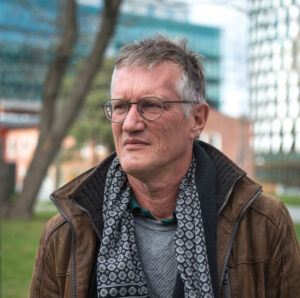
Anders Tegnell, Sweden’s state epidemiologist and the architect of the national response, has described the decision to keep society open as a holistic approach to public health, aiming to balance the risk of the virus with avoiding the long-term consequences of closing schools and businesses—a popular view among many Swedes. The government controversially refused restrictions early on and this approach was even lauded by none other than the World Health Organization back in April as a “model” for battling the coronavirus. Dr. Mike Ryan, the WHO’s top emergencies expert, said then there are “lessons to be learned” from the Scandinavian nation, which has largely relied on citizens to self-regulate. “I think there’s a perception out that Sweden has not put in control measures and just has allowed the disease to spread. Nothing can be further from the truth,” Ryan told reporters.
It is dangerous to have such strong convictions about an approach that over 2,000 medical doctors, professors, and researchers objected to as lacking credible data to support it. They’ve called on the government to introduce more stringent containment measures. Dr. Cecilia Söderberg-Nauclér—professor of immunology at the Karoliska Institute—said: “It is almost a tradition in Sweden to trust the authorities and trust their experts. But I am a scientist, and I don’t trust the authorities, I trust data. The problem with herd immunity is that we do not have any data on it yet, and I don’t think that we should be the first ones to test it. It is an experiment that I did not give my informed consent to and many with me have not done that either. The data that we do have access to and the developments in other countries just say that this is not a safe path to take. Nothing is safe here because many people are going to suffer […] We must establish control over the situation, we cannot head into a situation where we get complete chaos. No one has tried this route, so why should we test it first in Sweden, without informed consent?”
Herd immunity is when a large part of the population of an area is immune to a specific disease. If enough people are resistant to the cause of a disease, such as a virus or bacteria, it has nowhere to go. Individuals can become immune by recovering from an earlier infection or through vaccination. As vaccines have yet to be readily distributed to the public, one has had to rely on exposure—allowing enough members of a population to be infected, recover and then develop an immune system response to the virus. But herd immunity must be achieved by protecting people from a virus, not by exposing them to it haphazardly. Especially when the extent of the harm done by the pathogen is not yet fully understood.
This is because a lot of people die under the scenario of herd immunity. The Swedish experiment has shown as much. More than seven out of ten of all those who died because of COVID-19 in Sweden have had some form of elderly care. 3,002 of the dead have lived in nursing homes and 1,696 have had home care. As of December 6, Sweden’s per capita death rate from the coronavirus is 21st place in the world, at 637.31 deaths per million. Compared to other Scandinavian countries, Denmark has almost 5 times less deaths than Sweden; Finland 9 times; and Norway almost 11 times less. As of December 6, 7,067 people in Sweden have died.
Although Sweden’s Public Health Service and Tegnell insist on the opposite, the core of Sweden’s strategy is generally understood to have been about building natural herd immunity. Both the agency and Prime Minister Stefan Löfven have characterized their approach as “common sense” (“folkvätt”) trust-based recommendations rather than strict measures, such as lockdowns, which they say are unsustainable for a long time—herd immunity was only a desirable side effect. Internal communications, however, say otherwise.
E-mails obtained between national and regional authorities, including the Public Health Agency, as well as those received by other journalists, suggest that the goal was indeed to develop herd immunity—documents of these communications are readily available online. An example that clearly shows that government officials had considered herd immunity early on is an e-mail sent from a retired doctor on March 15 to Tegnell, which he passed on to his Finnish counterpart, Mika Salminen. In it, the retired doctor recommended that healthy people be infected in controlled environments to fight the epidemic. “One point would be to keep the schools open to reach herd immunity faster,” Tegnell noted at the top of the email. Salminen replied that the Finnish Health Agency had considered this but decided against it, because “over time, children will still spread the infection to other age groups.” In addition, the Finnish model showed that closing schools would reduce the “attack’s share of the disease in the elderly” by 10%. Tegnell replied: “10 percent can be worth it?”
Three men make a tiger
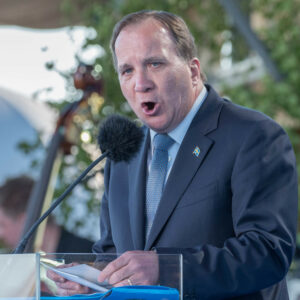
The majority of the rest of Sweden’s political decision-makers seemed to have agreed: the country never closed daycare centers or schools for children under 16 and school visits remain mandatory under Swedish law without the possibility of distance education or home tuition—not even for children with family members in high-risk groups. They effectively decided to use children and schools as participants in an experiment to see if herd immunity to a deadly disease could be achieved. Several outbreaks in schools occurred in both spring and autumn.
Löfven, his government, and the Public Health Service all say that the high death rate due to COVID-19 in Sweden can be attributed to the fact that a large proportion of these deaths occurred in nursing homes due to shortcomings in elderly care. But it was the high degree of infection throughout the country that was the underlying factor leading to many infections in nursing homes. As previously stated, many sick elderly people were not seen by a doctor because the country’s hospital implemented a triage system which included age and predicted prognosis. According to a study this was likely implemented to “reduce the burden on [the intensive care unit] at the expense of more high-risk patients—such as the elderly with confirmed infection—who die outside the ICU […] Only 13% of the elderly residents who died with COVID-19 in the spring received hospital care, according to preliminary statistics from the National Board of Health and Welfare, which was released in August.”
During the first eight months of the pandemic, Sweden did not quarantine infected households. Sweden’s official policy was that those without obvious symptoms are very unlikely to spread the virus even though evidence pointed to the risk of asymptomatic spreaders. Other countries rushed to obtain masks and personal protective equipment for care staff and providers in nursing homes, but Swedish authorities discouraged their use claiming that they give people a false sense of security and that social distancing is more important. But these two in conjunction are surely more effective than one measure on its own. There have been many reports that care personnel have been reprimanded or even fired for using facemasks at work, as it was considered to spread panic.
Statistics show that on May 24, Sweden conducted only 23.64 tests per 1,000 people, one of the lowest rates in Europe. When more tests were finally obtained in the summer, many were of poor quality. “Everyone wanted to test more, but there were no tests,” says Jonas Ludvigsson, an epidemiologist at the Karolinska Institute. “We did not make the equipment ourselves, and other nations had banned any export to keep all the equipment in their own countries. When Sweden finally got hold of test equipment from abroad, the quality was so poor that the tests could not be trusted.”
Still, the architects in the Swedish approach sell it as a success to the rest of the world. And officials in other countries, including at the top level of the US government, are discussing the strategy as one to emulate—even though in reality it will almost certainly increase the death toll and suffering.
Despite the relatively high deaths, reports of medical negligence in nursing homes, and test errors, Sweden’s COVID-19 strategy still has a relatively high degree of support among citizens. An opinion poll in September reported that 63 percent of those polled maintained confidence in Tegnell’s approach, although this was a slight decrease from a figure of 69 percent in April—support in the government’s response has sunk from 49 percent in May to 34 percent in September.
Yes, we can’t!
The Swedish government has not been entirely passive. On March 12, the government limited public gatherings to 500 people and the next day, the public health service published a press release telling people with possible COVID-19 symptoms to stay at home. On March 17, the Swedish Public Health Agency asked employers in the Stockholm area to let employees work from home if they could. The government limited further public gatherings to 50 people on March 29. Still, there were no recommendations for private events and the limit of 50 people did not apply to schools, libraries, corporate events, swimming pools, shopping malls or many other situations.
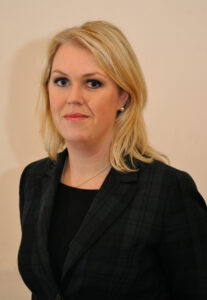
As of April 1, the government restricted visits to nursing homes (which were reopened to visitors on October 1 without masks recommended for visitors or staff). Meanwhile, institutions were forced to make their own decisions: Some colleges and universities switched to online tuition, restaurants and bars spaced out tables and seats, and some companies introduced rules about wearing masks on site and encouraged employees to work from home. But the rules imposed by the temporary “crisis law” only lasted for three months until June 30 and, despite the fact that the spread of infection is now increasing at a rapid pace, there is no attempt being made by the government to renew the temporary law.
Why? Politics. The Swedish Minister of Social Affairs Lena Hallengren says that the government’s powers were limited and therefore did not become useful: “It was a big problem, because then it was a big job that had to be done. We wanted a mandate from the Riksdag (the Swedish Parliament) to be able to make decisions quickly. We did not get that mandate from the Riksdag. I think the Riksdag told us that they do not want us to have such a large mandate.” This is patently untrue.
The regulations announced by the government were to be presented “immediately” afterwards in the form of a bill for review in the Riksdag—”immediately” meaning a few days. But, as commented by a spokesperson for the main opposition party in the parliament, Tobias Billström, the government was given exactly the powers it asked for back in April when the Riksdag voted, almost unanimously, in favor of the government’s proposal. It was a government agency—the Council on Legislation—that wanted the government’s regulations on shutdown measures in retrospect to be quickly submitted to the Riksdag for review. According to Billström, writing such a bill in such a short time would not have been a big problem. The issue here is a lacking work effort by the government.
“The government has made it an art to blame everyone but itself.”
Indeed, the approval process was simple and efficient in the spring. In practice, it would have been enough for the government to send an A4 page with the reasons on their action plan to the Riksdag. This is something that the Government offices with its 4,500 employees should be expected to handle. Nothing is preventing the government from acting, but the government is choosing not to pursue another temporary law. Instead, Hallenberg began to develop a new and more elaborate pandemic law, which is planned to enter into force next summer.
The government has made it an art to blame everyone but itself. When their crisis management fails, it is the fault of the municipalities, the regions, authorities, the Swedish management model. The list goes on. The prime minister even gave a speech to the nation where he scolded the Swedish people for not following the Public Health Agency’s advice and recommendations without any hint of self-criticism. And now it is the Riksdag’s turn to be on the receiving end of Löfven and team’s finger wagging.
The experiment is over
Crisis laws are a sensitive issue because they affect citizens’ fundamental freedoms and rights—the freedom of movement in Sweden being guaranteed by constitutional law. “The government will continue to make all the necessary decisions to reduce the spread of infection,” said Prime Minister Stefan Löfven at a press conference on November 19. Clearly, the government has not been able to get the public to voluntarily limit themselves to staying at home. They are also still squabbling about whether or whether not face masks are effective protection against the virus (they are) which is going to waste more time, in turn straining more resources, putting more pressure on an already exhausted health care workforce.
However, the rise in infections has prompted the country to take more forceful action in recent weeks. The country has moved to ban the sale of alcohol in pubs and bars after 22.00 and Tegnell told Swedes this week that the government may be forced to impose travel restrictions across the country “just before Christmas”. The Swedish experiment may be over, but the pandemic is not. Only time will tell if what was not done was made right by what was. At the time of writing, much seems very wrong and much will need to be answered for.
Related articles
Back from the borderlands: taming and framing COVID-19
Photo credits
Anders Tegnell in 2020 (11 av 15), by Frankie Fouganthin, CC BY-SA 4.0
Stefan Löfven EM1B1409 by Bengt Nyman, CC BY 2.0
Socialdemokrat.Lena Hallengren 1c301 5973, by Janwikiphoto, CC BY-SA 3.0
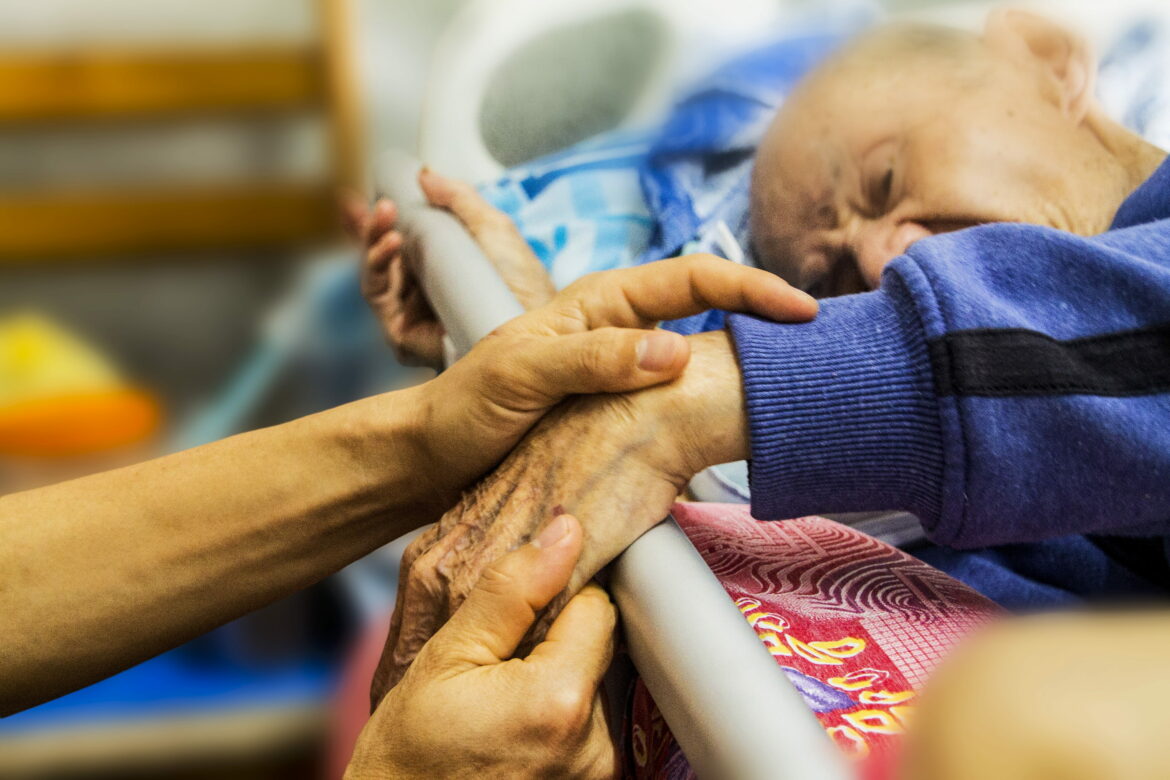



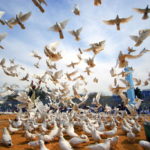


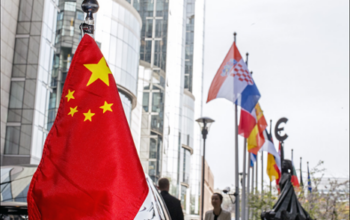



This perfectly sums up a lot of my frustrations as a foreigner/ex-pat living living in Sweden. Experimenting with herd immunity in the midst of a global pandemic is dangerous and irresponsible. It’s immigrants, POC, the houseless, the working-class, the elderly, and people with pre-existing conditions who get hit the hardest by herd immunity. Herd immunity kills people. Sweden’s approach shows that Sweden only cares about and prioritizes the well-being of it’s wealthy and white citizens as those are the ones who have the resources and protection to survive herd immunity. What bothers me the most is this fake image Sweden (and the rest of the western world) keeps pushing as some kind of socialist Utopia, when in fact todays Sweden leans more towards a capitalist society. It feels like Sweden markets itself accordingly depending on what the situation asks for.